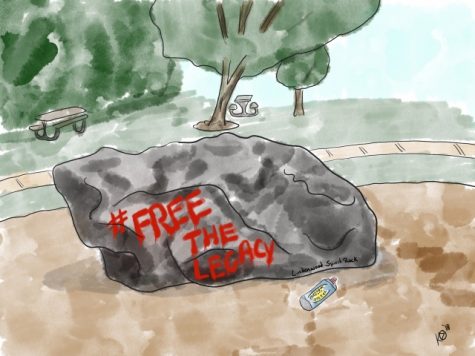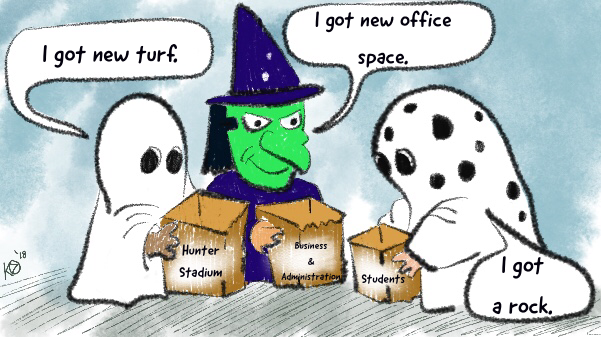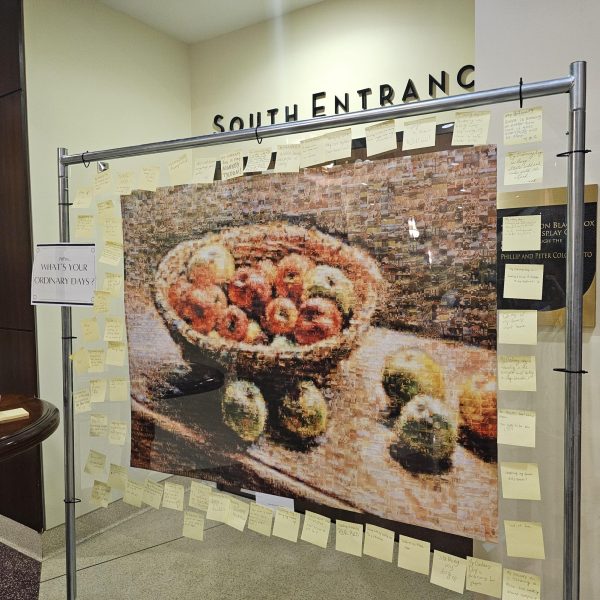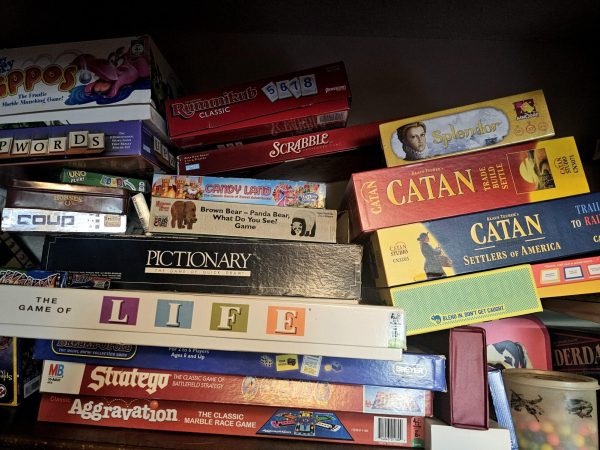Opinion: LU’s reasons for cutting print magazine don’t hold up
Photo by Kat Owens
Editorial cartoon by Kat Owens
July 11, 2018
Editorial Board
Let’s face it: Journalism, much like the real world, is not always nice.
But the truth is what journalists are constantly seeking and providing.
Lindenwood University apparently does not support the pursuit of journalism when it is not viewed as positive for the university.
Administrators have made that clear by choosing to cut Legacy magazine, the most visible student media on campus.
In a meeting announcing the end of the print publication, Dean Joseph Alsobrook cited a 2016 review from Drake University associate professor Jill Van Wyke as evidence of the need to shift focus to online media.
But when Legacy editor Mitchell Kraus called Van Wyke, she said: “I don’t find anywhere in there [her report] where I call for the elimination of the print platform.”
Her review was 26 pages long and more than 9,000 words, but the administration used seven paragraphs, less than half a page of the report, to support its claim that print is unnecessary. Additionally, Provost Marilyn Abbott refused to release Van Wyke’s full report because of the “understanding” between outside auditors and the university that the report would remain private.
By twisting Van Wyke’s report to justify cutting the printed magazine on educational grounds, the administration exposed the dishonesty of its supposed reasoning.
Despite changing trends in media, print remains a relevant part of journalists’ educational experience.
“For people who want to go into journalism, working at a print publication is often the first thing they go into after college,” said Kari Williams, director of Region 7 of the Society of Professional Journalists, which includes Missouri.
Let’s be very real: print is not dead. And it won’t die soon; it will just take different shapes. Are magazines on your coffee table? Books nearby? Catalogs for businesses? Fliers in your mailbox from companies?
Another reason Alsobrook used to justify cutting the printing of the Legacy is cost. Last year, printing costs for the five issues of the magazine — minus ad revenue — was less than $7,000.


So if Lindenwood is so cash strapped, how does it continue to find the money to waste on myriad luxurious expenses? How much was spent on the “spirit rock” placed on campus this May? How much is being spent on the new turf for the football field in Hunter Stadium and the general remodeling of campus facilities over the summer?
This stands as an ironic contrast to its new mission statement “Real Experience. Real Success.” If the university chooses to focus its spending on stylish attractions rather than educational substance, this speaks to the educational integrity and merit of the university.
Lindenwood grasping at straws to justify defunding the Legacy suggests that its real motive is to sweep under the rug coverage that they find controversial or personally inconvenient.
We never aspired to write vicious hit pieces against the university. Most of our coverage was very positive. But we also covered serious issues, like mental health, campus drinking and sex assault. To ignore them and only cover stories the university likes would be closer to propaganda than balanced and comprehensive journalism.
The fact is that when the Legacy switched to a magazine in fall 2017, journalism students had the best of both worlds. They had a publication for well-researched stories in the magazine and used Lindenlink for breaking news and event coverage.
The Legacy provided a space for deep, investigative stories. Online is not the place for these stories because the fast-paced users reading online are not going to slow down for it. We need the Legacy as a platform to share those stories in the appropriate place.
The move enhanced, not hurt, Lindenlink’s presence. In 2017-2018, Lindenlink posted 1,005 articles, nearly triple the 344 stories published the year before.
In addition, one of our magazine stories about the 20th anniversary of the only murder on campus was carried online and got more than 92,000 views. This proves that running stories cross platform is an effective method of reaching readers.
Terminating the print magazine — coupled with moving our journalism lab to the basement of an obscure old dorm — has the effect of making our media “out of sight, out of mind.”
Because of this, the publication staff will resist efforts to cut the Legacy. If we allow this cut to happen without fighting back, how long will it be before administrators take down our website? Their quest to eliminate objective journalism will never be satisfied. It’s either fight, or pretty soon student journalists will be allowed to print only unethical, public relations driven pieces to appease the university.
#FreeTheLegacy


















